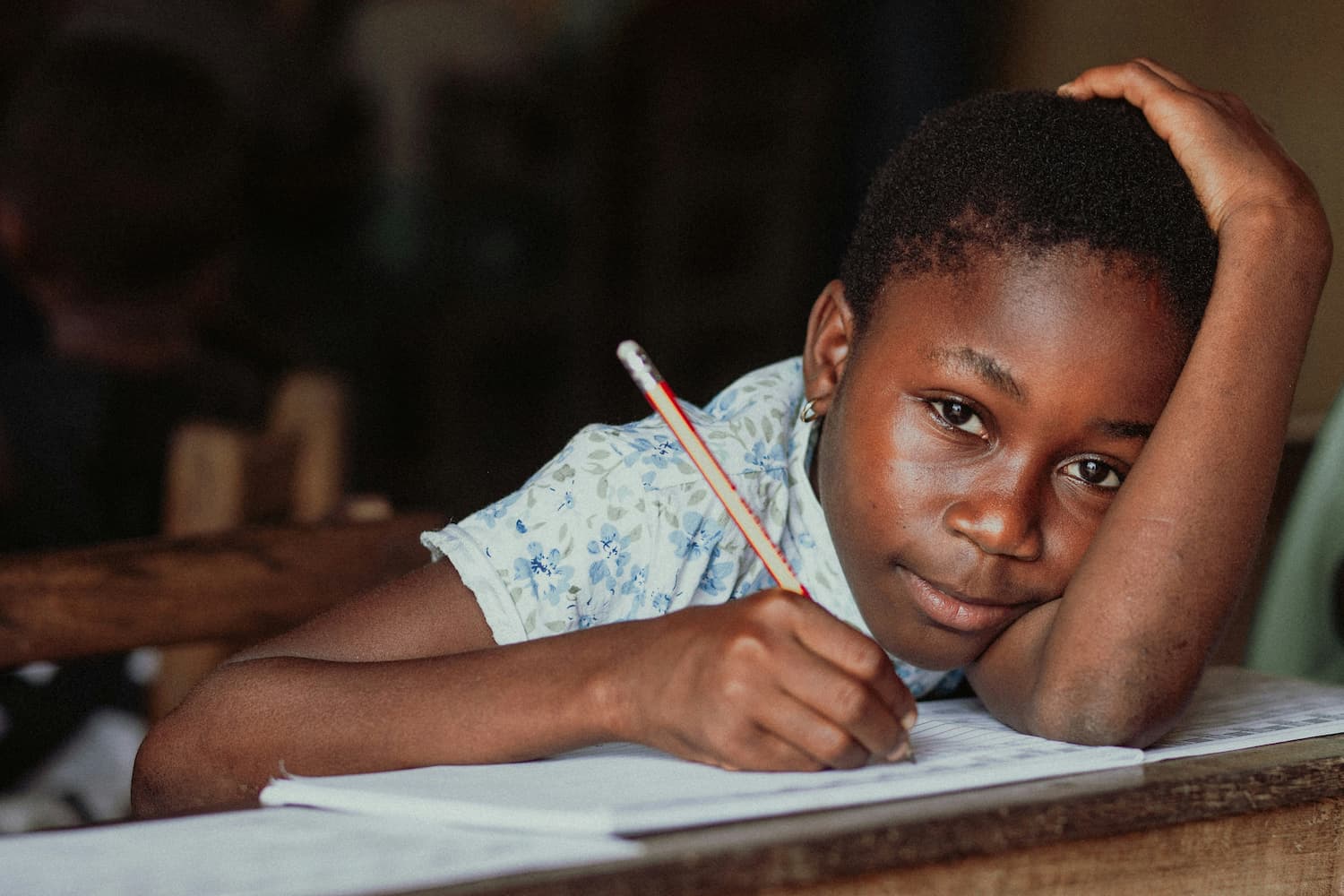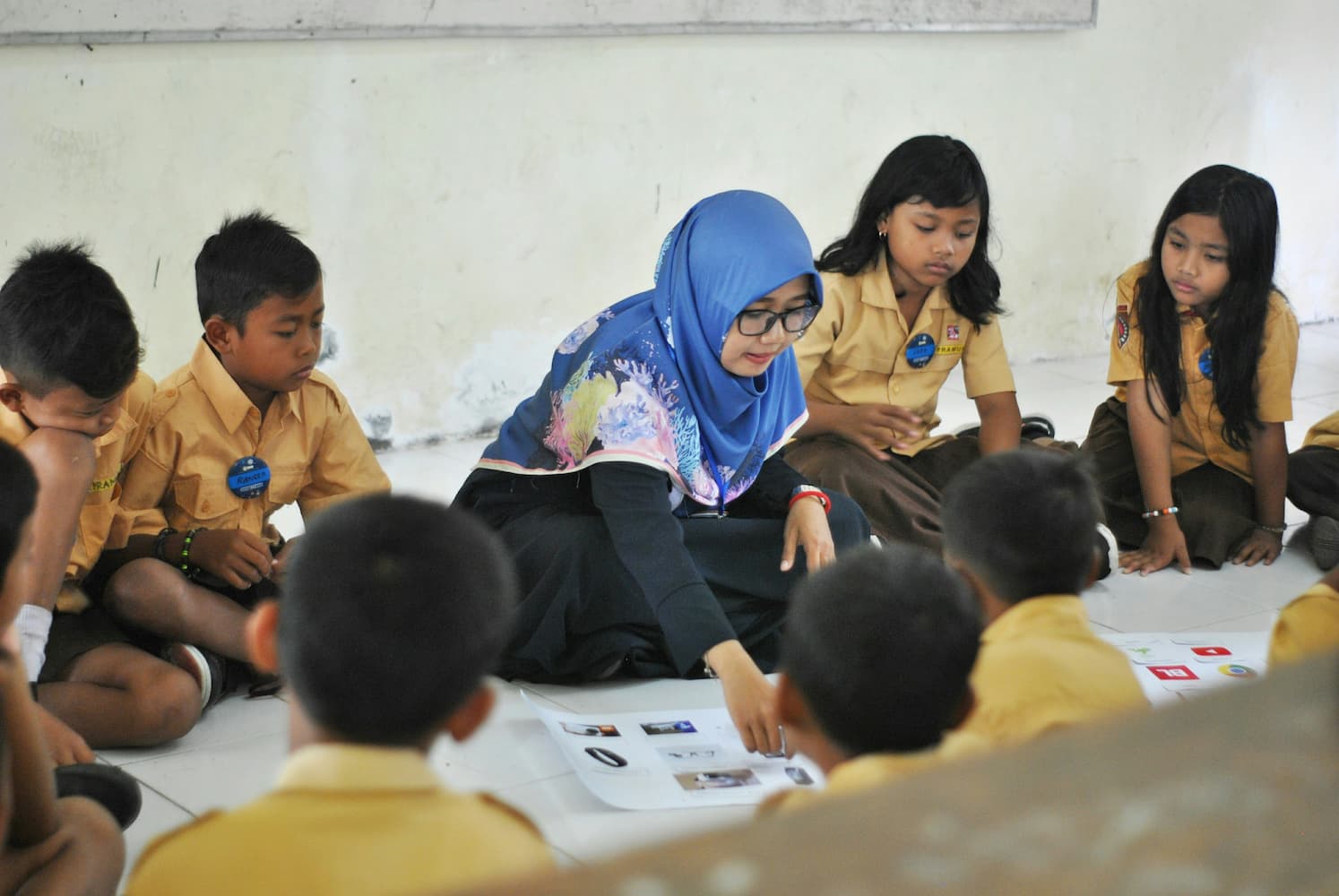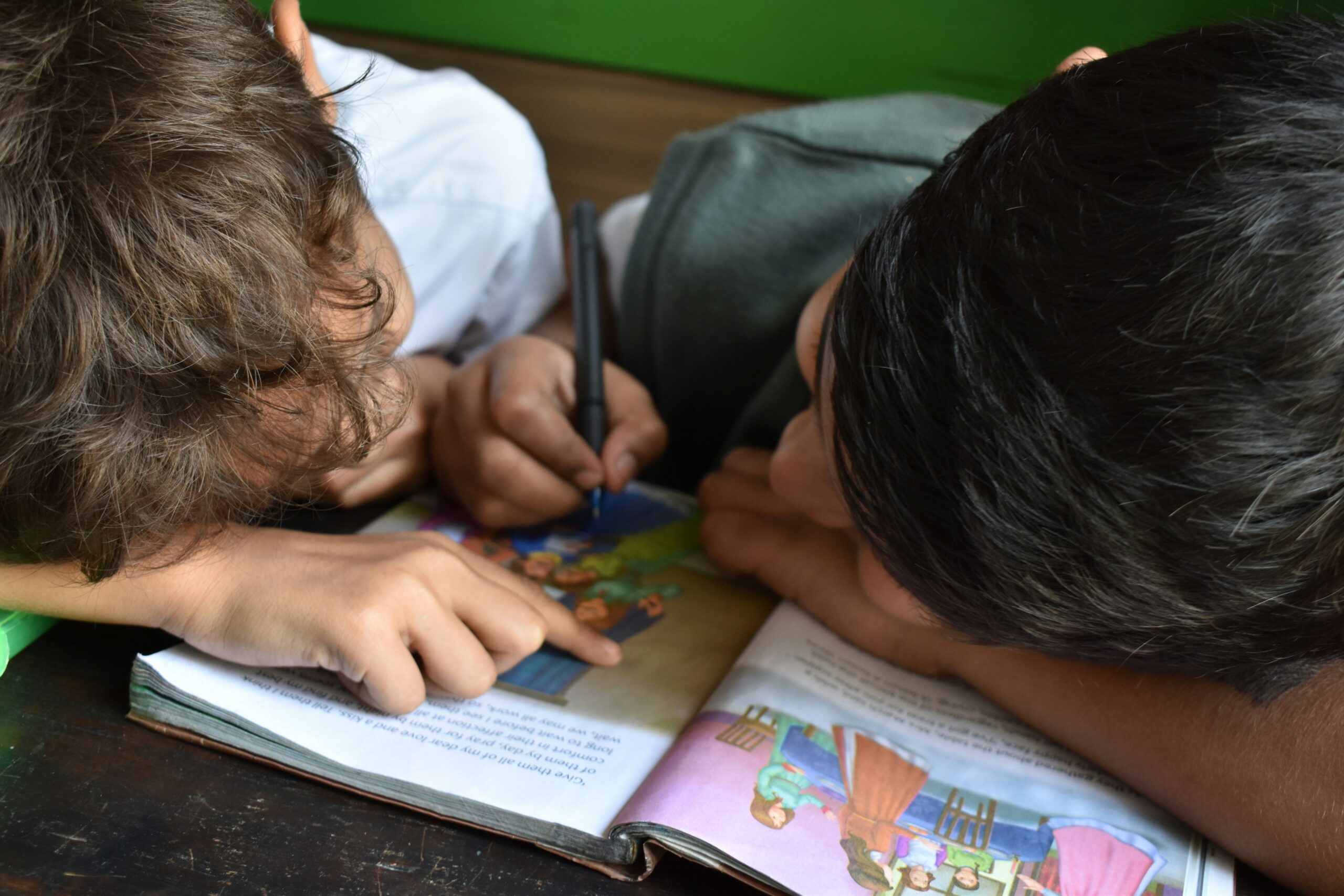Blog
Framing the problem of best buys in politics: the political economy of education research
Stefan Dercon
Why do policymakers choose education reforms that aren’t supported by evidence? And how can researchers work with them to implement interventions with better outcomes? These are thorny questions often faced by education researchers and stakeholders worldwide.
The answers aren’t simple. To explore this issue, we’re sharing a blog series examining just one example – a story of laptops in Kenya. In Part 1, we frame and explore the problem; in Part 2, we discuss approaches to address it.
An election promise
‘Provide … laptop computers equipped with relevant content for every school age child in Kenya’ was one of the key commitments on education in the 2013 election manifesto from the Jubilee Coalition, a political alliance in Kenya.1 Its leader, Uhuru Kenyatta, emerged victorious and he ruled the country as President until 2022.
Delivery of this project started in 2015, with $600m committed. With most of the funds spent, the project was put on hold in 2019. It was subsequently abandoned and written off as a failure.2
The ‘One Laptop per Child’ (OLPC) programme grew out of Massachusetts Institute of Technology (MIT) in 2005. In its early incarnation, it involved simply putting cheap laptops in the hands of children. This version caught the imagination of policymakers and funders alike.
Nevertheless, in 2013, academics had already warned that it was unlikely to work3, with rigorous evidence from other countries such as China and Peru emerging that distributing laptops had no positive impacts on learning.4
A wealth of evidence in Kenya
It is puzzling that Kenya took this route, as plenty of education research had built up much relevant evidence to innovate in its education system. By the time President Uhuru Kenyatta came to power, Kenya was one of the African countries with the most evidence on ‘what works’ in education, and what does not work.
Well-known studies published in the best journals had looked at, among others, the learning and other impacts of contract teachers, better teacher incentives, scholarships, physical inputs, school meals and health interventions such as deworming.
Much of the work involved Michael Kremer, and it was quoted in the citation for his Nobel Prize in 2019.5 Those involved tried to get this emerging research from Kenya and elsewhere in good time to the attention of senior officials in Kenya – with, for example, special notes prepared for the Prime Minister’s Office.6 In their careful advice, ‘One Laptop per Child’ was not mentioned as a ‘what works’ intervention.
The fact that much of this work was with NGOs and not with state schools may have made these senior officials less interested – maybe in some cases even for justifiable reasons, as it was argued later on.7
A highly promising alternative
Officials had fewer excuses to ignore the evidence generated in close collaboration with the Ministry of Education (in collaboration with the UK’s Department for International Development and USAID) by the Kenya Primary Math and Reading (PRIMR) Initiative.
The PRIMR programme was an applied research programme in 1,384 schools, focused on improving English, Kiswahili, mother tongue literacy and mathematics skills of children in grades 1 and 2, which, by 2013, had already started to show rigorous evidence of the impact on learning outcomes.8
Still, I recall the most senior officials of the Ministry of Education telling me in 2014, all attention had to go on the Kenyan version of ‘One Laptop per Child’ as it was the President’s priority.
Meanwhile, the rigorous evidence on the relative success from PRIMR accumulated further, and it was subsequently further scaled as Tusome.9 Despite continuing enthusiastic donor support, it never got the same political or equivalent financial attention as the President’s programme. Since 2015, the Government has added $62.5m to the donor resources – still much less than it spent on the ‘One Laptop per Child’ programme.10 By the time USAID’s role ceased in 2022, some of the early gains may have been lost11, although overall, it still is one of the few education programmes in Africa that can be seen to have been impactful at scale.12
Explaining the choice
So why did President Kenyatta ignore ‘what works’ and pick a programme that was proven not to work? Why not settle for the rich evidence, either presented by top academics to his officials, or generated with the close collaboration of his own Ministry?
I cannot be certain, but it is unlikely that President Kenyatta and his advisors were just foolish and ignorant. I doubt that better and glossier policy briefs by ever larger comms teams would have had more impact on selling the academic research. I also doubt that more Ambassador visits to the President-elect would have swayed him from going for the laptops, in favour of the evidence-based advice from PRIMR.
I suspect that the answer likely will include that the evidence did not work for him and his political allies, and he ended up picking something from his list of best buys in politics, even if it ended up costing $600m.13
Some have argued that this project was just ‘an ego project since the leaders are basically trying to outdo their opponents by showing that they can meet whatever promises they had made to the electorate’, even if it needs a miracle.14 ‘One Laptop per Child’ definitely was not based on evidence, but, as one has seen across the world, on an attractive political narrative that alludes both to something ‘innovative’ and to a direct ‘asset transfer’ to the children and their families.
What can researchers do?
Where does this leave the education researcher, patiently and rigorously trying to figure out how to boost learning by another fraction of a standard error? How can they have any impact if the choices of the policymakers they must deal with are not driven by a drive for outcomes?
In a recent article, I tried to characterise how one could try to deal with a policymaker who does not care about development, or at least cares about (too) many other things, such as staying in power or rewarding friends and allies with jobs and contracts. What does this mean for research and the advice one gives? 15
The problem can be easily extended to education research and evidence: how to deal with decision-makers who are not interested in evidence of what works for learning or at least need to weigh what they decide with vested interests in keeping power and delivering for those that keep them there, from contractors to teacher unions or just cronies. In short, how do you appeal to decision-makers whose objective is not simply boosting learning outcomes?
Potential responses
One response is the most common: do the research as if the politics of research uptake and implementation does not exist. If one cares about real-world impact, this is a naïve approach. Nevertheless, it can be consciously naïve: it is worth knowing how to improve pedagogy through more structure or how cheap teaching assistants can do a far more cost-effective job (even if the local teacher unions will make sure your intervention will never see the light of day in any state school).16
This approach stops neither academic publications nor a successful academic career. However, if one cares about actual impact at scale, it surely is not simply naïve but also deeply disappointing to spend years designing interventions ‘that work’ but that will never be taken up.
The lack of impact stems here from misaligned objectives: the researcher and intervention designer want to boost learning outcomes, and the policy decision-maker and implementer may like better learning outcomes but also have other objectives and constraints that drive their actions. Impact clearly demands understanding these objectives and constraints, or interventions may never be implemented.
Therefore, the key question is this: how do you marry researchers’ and policymakers’ interests in one intervention?
Read Part 2 in this blog series to see some answers.
2. ‘Kenya’s failed one laptop per child project’, iAfrikan
3. ‘Kenya’s laptops for schools dream fails to address reality’, The Guardian
4. Beuermann, Diether W., Julian P. Cristia, Yyannu Cruz-Aguayo, Santiago Cueto, and Ofer Malamud. Home computers and child outcomes: Short-term impacts from a randomized experiment in Peru. No. w18818. National Bureau of Economic Research, 2013; Cristia, Julian, Pablo Ibarrarán, Santiago Cueto, Ana Santiago, and Eugenio Severín. “Technology and child development: Evidence from the one laptop per child program.” American Economic Journal: Applied Economics 9, no. 3 (2017): 295-320; Mo, Di, Linxiu Zhang, Jiafu Wang, Weiming Huang, Yao Shi, Matthew Boswell, and Scott Rozelle. “Persistence of learning gains from computer assisted learning: Experimental evidence from China.” Journal of Computer Assisted Learning 31, no. 6 (2015): 562-581. The NGO originally promoting it, OPLC, based Miami now has evolved its own theory of change, focusing more on learning through technology.
5. The Sveriges Riksbank Prize in Economic Sciences in Memory of Alfred Nobel 2019 Press Release
6. Access and Quality in the Kenyan Education System: A Review of the Progress, Challenges and Potential Solutions Prepared for Office of the Prime Minister of Kenya By Rachel Glennerster, Michael Kremer, Isaac Mbiti and Kudzai Takavarasha, In Collaboration with The Abdul Latif Poverty Action Lab at MIT (J-PAL) and Innovations for Poverty Action (IPA), May 2011.
7. Bold et al. (2018) had found that they could replicate delivery of particular reforms in other NGO schools, but not in state schools, with local political economy and implementation issues related to bureaucrats, teachers and their unions plausible reasons. Bold, Tessa, Mwangi Kimenyi, Germano Mwabu, and Justin Sandefur. “Experimental evidence on scaling up education reforms in Kenya.” Journal of Public Economics 168 (2018): 1-20.
8. Piper, Benjamin, Stephanie Simmons Zuilkowski, and Abel Mugenda. “Improving reading outcomes in Kenya: First-year effects of the PRIMR Initiative.” International Journal of Educational Development 37 (2014): 11-21.
9. Piper, Benjamin, Joseph Destefano, Esther M. Kinyanjui, and Salome Ong’ele. “Scaling up successfully: Lessons from Kenya’s Tusome national literacy program.” Journal of Educational Change 19 (2018): 293-321.
10. Tusome Early Grade Reading. Figures here would imply USAID spent about $90m.
11. ‘Institutionalizing Tusome in Kenya: promise and pitfalls’, UNESCO
12. Angrist, Noam, David K. Evans, Deon Filmer, Rachel Glennerster, Halsey Rogers, and Shwetlena Sabarwal. “How to improve education outcomes most efficiently? A review of the evidence using a unified metric.” Journal of Development Economics (2024): 103382.
13. This is an illustration of what is articulated in the What Works Hub for Global Education intellectual framework: if we want uptake at scale, there has to be a ‘policy plan’ to which implementers can commit themselves. Of course, it is no guarantee for implementation – see for example Angrist and Dercon (2024), but without this commitment, nothing will happen (see also Dercon (2022). And as primary education was made highly political by President Kenyatta, political commitment was essential. Angrist, Noam, and Stefan Dercon. “Mind the gap between education policy and practice.” Nature Human Behaviour (2024): 1-3; Dercon, Stefan. Gambling on development. Hurst publishers, 2022.
14. Page 195 in Waga, Duncan, Esther Makori, and Kefa Rabah. “Utilization of Cloud Computing in Education and Research to the Attainment of Millennium Development Goals and Vision 2030 in Kenya.” Universal Journal of Educational Research 2, no. 2 (2014): 193-199.
15. Stefan Dercon, The Political Economy of Economic Policy Advice, Journal of African Economies, forthcoming 2024.
16. Bold et al. (2018) suggest the opposition of teacher unions meant that state schools would not adopt the model of contract teachers successfully tried in NGO schools. Bold, Tessa, Mwangi Kimenyi, Germano Mwabu, and Justin Sandefur. “Experimental evidence on scaling up education reforms in Kenya.” Journal of Public Economics 168 (2018): 1-20.
Dercon, S. 2025. Framing the problem of best of best buys in politics: the political economy of education research. What Works Hub for Global Education. Blog. 2025/005. https://doi.org/10.35489/BSG-WhatWorksHubforGlobalEducation-BL_2025/005
Discover more

What we do
Our work will directly affect up to 3 million children, and reach up to 17 million more through its influence.

Who we are
A group of strategic partners, consortium partners, researchers, policymakers, practitioners and professionals working together.

Get involved
Share our goal of literacy, numeracy and other key skills for all children? Follow us, work with us or join us at an event.
